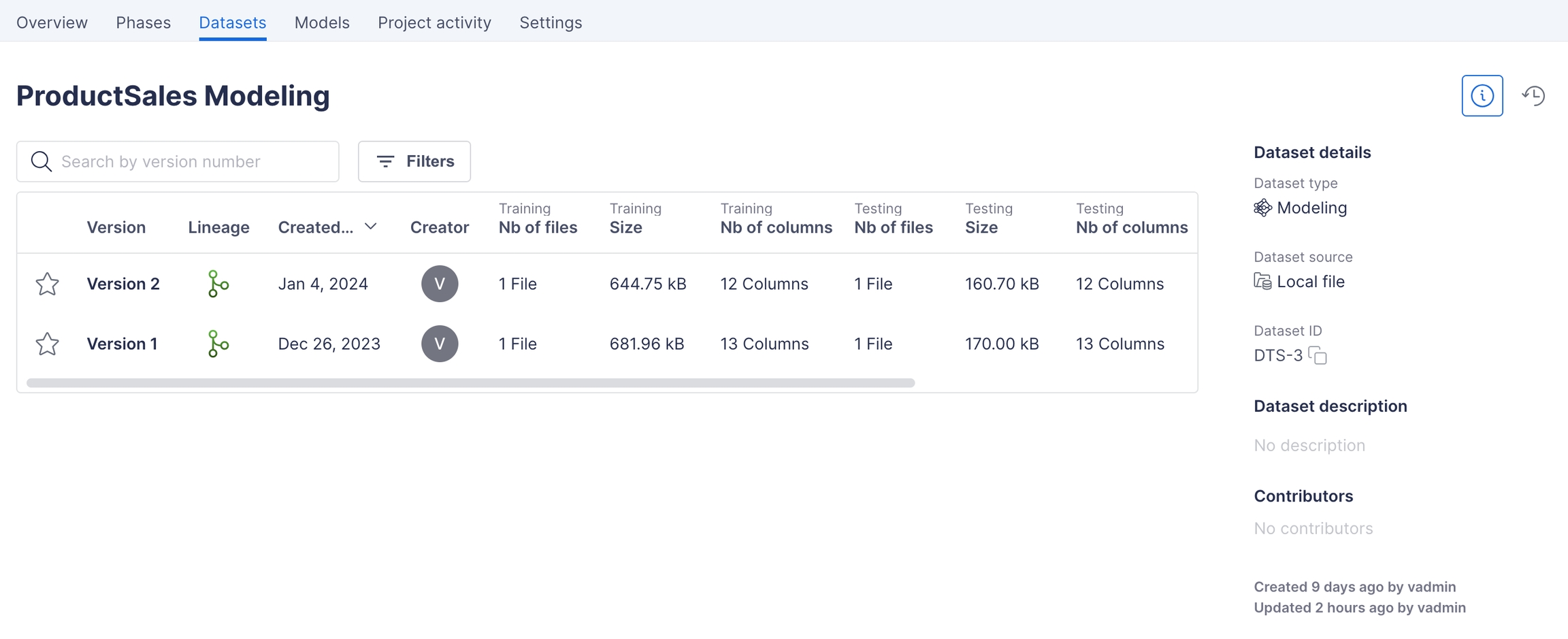Dataset lineage and versions
Dataset lineage
To keep track of your derived datasets lineage, use the derived_from parameter to list the datasets (or dataset IDs) from which your dataset is derived.
from vectice import Dataset, FileResource
origin_dataset = Dataset.origin(
name="my origin dataset",
resource=FileResource(paths="origin.csv"),
)
clean_dataset = Dataset.clean(
name="my clean dataset",
resource=FileResource(paths="clean_dataset.csv"),
derived_from= [origin_dataset]
)Dataset versions
Dataset versions are datasets with the same name as another dataset that you have already logged in Vectice. Logging datasets with the same name automatically increment the versions, maintaining the dataset's history.
